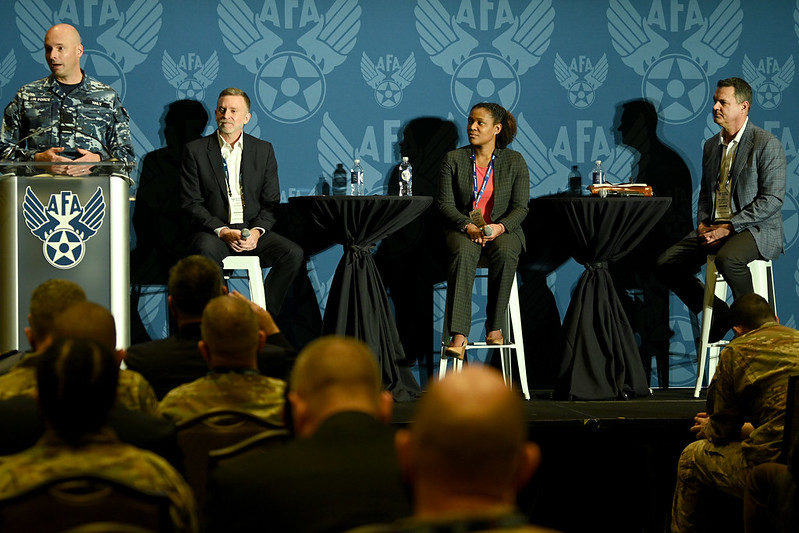Autonomous systems will emerge as critical in future fights, according to industry and military representatives who spoke at the AFA Warfare Symposium. They said they’re convinced of the fact.
But before this happens, they believe, Airmen, Guardians and other troops must know they can trust these machines to work without distracting humans from their missions.
“We know that autonomous systems can lead to cost savings [and] better use of our workforce across our air forces and services across the joint force,” said Air Commodore John Haly, the Royal Australian Air Force’s air and space attache in Washington. “But there clearly are implications in what and how we do things,” said Haly, who moderated the discussion.
Unmanned systems might someday assume integral roles in the daily operations tempo, said Chris Pehrson, vice president for special programs at General Atomics Aeronautical Systems.
“It’s going to be a disaggregated network, and they’re all going to be feeding data with precision timing and precision communications and … really bringing all that together for a shared situational awareness,” Pehrson said. “Again, trust is the foundation. We have to build that trust—that it’s not going to put our own crews in danger.”
An approach that allows for rapid training may help foster that trust, said Tony Bacarella, vice president of advanced programs at Elbit America. “That allows you to go into a synthetic environment to get the training on these multiple missions and environments,” Bacarella said.
Synthetic environments can also help in improving AI algorithms and human-machine teaming, Bacarella said. “We [at Elbit America] have done that. And we think it’s important … to have the AI [artificial intelligence] trainable.”
While such synthetic testing can streamline the engineering process and thus improve cost effectiveness, Krystle J. Carr, senior director of autonomous aviation and technology at Boeing Defense, Space, and Security said real-time testing is also essential.
“That doesn’t mean you don’t ever bend metal, that you don’t fly and test your prototypes to make sure that what you’re seeing in the digital environment is real,” Carr said. “But you can do a lot digitally at first.”
The panel agreed there would likely be no one-size-fits-all approach to full integration of human-operated and autonomous systems. The machines and their human counterparts must be able to communicate clearly, just as the nations partnering with the U.S. should as well.
“We think the future really comes down to, there’s going to be a bunch of different solutions and a bunch of different areas that are going to need tools from every company to make a successful route forward,” Bacarella said.
“As an Australian, with the United States [and] all of our friends and partners around the world, we will always sound like we have an accent when we talk to each other,” Haly said. “But if we can build systems that don’t have a digital accent when they talk to each other, we give ourselves the preconditions for the interoperability and interchangeability that fundamentally we need if we’re going to meet the challenge of the day.”
